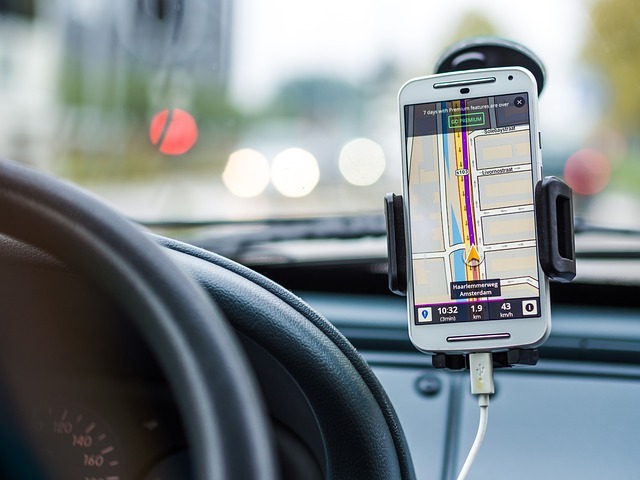Exploring the great outdoors, especially the backcountry, can be an exhilarating adventure. However, ensuring you have the right tools to navigate through the wilderness is crucial. Global Positioning System (GPS) navigation has become a game-changer for outdoor enthusiasts, providing accurate location data and mapping capabilities. In this article, we’ll delve into essential tips and troubleshooting strategies to enhance your backcountry GPS experience.
Understanding Your GPS Device
Choosing the Right Device for Your Adventure
Selecting the appropriate GPS device is the first step to a successful backcountry journey. Whether you opt for a handheld GPS unit or a smartphone app, ensure it is equipped with robust mapping features and has a durable, weather-resistant design. [Outdoor GPS] devices are specifically designed for rugged terrains and varying weather conditions, providing reliability when you need it the most.
1. Consider the Terrain:
When selecting a GPS device for your backcountry adventure, take into account the type of terrain you’ll be navigating. Some devices are better suited for mountainous regions, while others excel in dense forests. Choose a device that aligns with the specific challenges of your planned route.
2. Weather Resistance Matters:
The unpredictability of weather in the backcountry demands a GPS device that can withstand the elements. Opt for a device with a durable, weather-resistant design to ensure it remains functional even in rain, snow, or extreme temperatures.
3. Battery Life for Extended Journeys:
Assess the battery life of your chosen GPS device, especially if you plan on extended trips. Look for devices with long battery life or those that allow for the use of external power sources. Carrying spare batteries or a portable charger is a wise precaution.
4. Ease of Use:
A user-friendly interface is essential for a seamless navigation experience. Prioritize devices with intuitive menus and controls. The last thing you want is to struggle with your GPS while navigating challenging terrain.
5. Mapping Features:
Comprehensive mapping features are crucial for effective route planning. Ensure your GPS device provides detailed topographic maps, satellite imagery, and the ability to set waypoints. A device with a variety of map views adds versatility to your navigation toolkit.
6. Size and Weight:
Balancing functionality with portability is key. Choose a GPS device that strikes the right balance between features and size. Handheld devices are often preferred for their compact design, making them easy to carry in your backpack.
7. Durability:
Backcountry conditions can be harsh, so invest in a GPS device that is built to last. Look for devices with robust construction and materials that can withstand rough handling and occasional bumps or drops.
8. Signal Strength:
Signal strength is paramount in GPS navigation. Some devices come with external antenna options to enhance signal reception in challenging environments. Prioritize devices with strong signal capabilities, especially if you expect to encounter dense tree cover or mountainous terrain.
9. Budget Considerations:
While advanced features are desirable, they often come with a higher price tag. Assess your budget and find a GPS device that meets your essential needs without compromising on quality. There are reliable options available for various budget ranges.
10. Read Reviews and Seek Recommendations:
Before making a final decision, read user reviews and seek recommendations from fellow outdoor enthusiasts. Real-world experiences can provide valuable insights into the performance, durability, and overall satisfaction with a particular GPS device.
Choosing the right GPS device is a pivotal step in ensuring a successful backcountry adventure. By considering factors such as terrain, weather resistance, battery life, and user-friendliness, you’ll be well-equipped to navigate the wilderness with confidence and precision.
Familiarizing Yourself with the Interface
Before embarking on your backcountry trip, take the time to familiarize yourself with the GPS device’s interface. Understanding how to set waypoints, read coordinates, and switch between map views can save valuable time in the field. Each device may have unique features, so refer to the user manual for a comprehensive guide.
Planning Your Route
Researching the Terrain
One of the key benefits of GPS navigation is the ability to plan your route in advance. Utilize online maps and satellite imagery to research the terrain and identify key landmarks. This proactive approach enhances safety and helps you anticipate potential challenges such as steep slopes, water crossings, or dense vegetation.
Setting Waypoints for Navigation
Marking waypoints along your route is an effective way to stay on course. These virtual markers serve as checkpoints, guiding you through the backcountry with precision. Additionally, assigning names to waypoints based on notable features or milestones can add a personal touch to your journey.
Troubleshooting Common Issues
Dealing with Signal Loss
In the backcountry, signal loss can be a common challenge due to dense tree cover or mountainous terrain. When facing signal issues, move to an open area to allow the GPS device to reconnect with satellites. Alternatively, consider using an external antenna to boost signal strength in challenging environments.
Conserving Battery Life
Battery life is a critical concern during extended backcountry trips. To conserve battery power, dim the screen brightness, turn off non-essential features, and carry spare batteries or a portable charger. Additionally, using lithium batteries in cold weather ensures optimal performance compared to traditional alkaline batteries.
Calibrating the Compass
A calibrated compass is essential for accurate navigation. If you notice discrepancies in your GPS readings, calibrate the compass according to the device’s instructions. This simple step can prevent navigation errors and enhance the overall reliability of your GPS unit.
Embracing Map and Compass Skills
While GPS technology is a powerful tool, traditional map and compass skills are invaluable in the backcountry. Combining these skills with GPS navigation creates a comprehensive approach to wilderness travel. Practice reading topographic maps, understanding contour lines, and using a compass for orientation to enhance your navigation prowess.
Safety First
Relying solely on GPS technology can pose risks, as devices may malfunction or run out of battery. Always carry a physical map and compass as a backup. In the event of a GPS failure, these tools become essential for navigating your way back to safety.
Conclusion
In the realm of backcountry exploration, GPS navigation is a game-changer that enhances safety and precision. By understanding your GPS device, planning your route effectively, troubleshooting common issues, and embracing traditional navigation skills, you’ll be well-equipped for any adventure. Remember, technology is a tool, but your skills and preparedness are the keys to a successful backcountry experience. So, gear up, plan ahead, and let the wilderness be your guide. Happy exploring!







